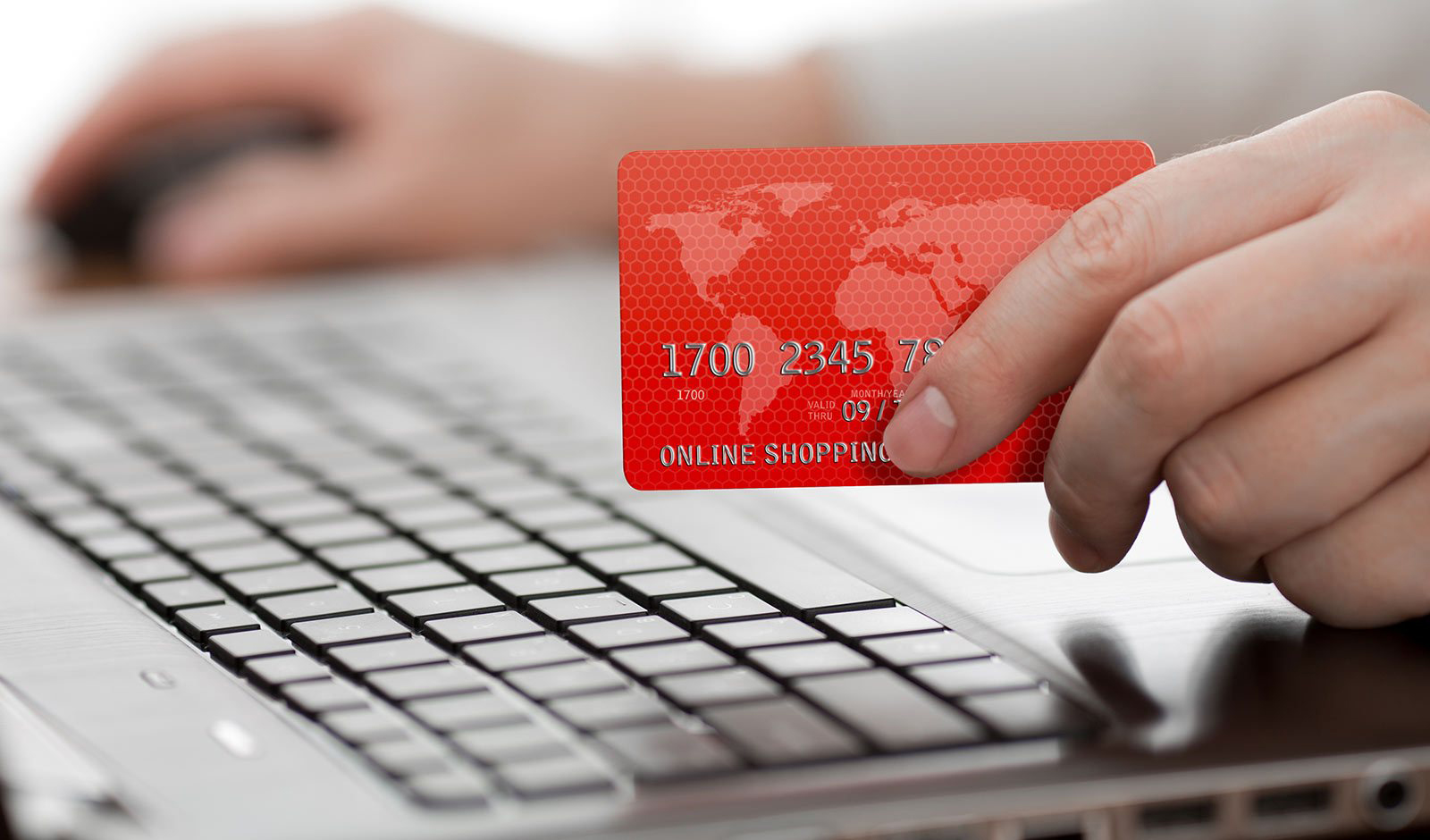
Growth Marketing
Expert recommendations designed to amplify your brand and product
It’s time to jump-start sales and here are some great ideas to get you started.
Expand Your Sales Channels
You know it is exhausting keeping up with your store, your customers and keeping one eye open for new platforms where you can sell your products. Let’s explore the locations where you need to be selling.
Your Own Store
Let’s get the obvious one out of the way first. If you don’t already have an online store, you need to consider building one. The main reason you want to create your own online store is that you set all the rules and you make much higher margin selling through your own store than you do selling through a 3rd party. A 3rd party like Amazon will take 15% off your revenue right off the top, that may not sound like a lot, but if you consider that the average retailer only has a 30% profit margin, Amazon is taking ½ of your gross profit.
We build online stores for our customers in both WooCommerce and Shopify. There are pluses and minuses to both platforms, if you want to research them both in depth before deciding take a look here to learn more.
Amazon
Amazon is the 90 pound gorilla in the room. The market cap of Amazon is more than 4 times the market cap of the following brick and mortar retailers: Macys, Kohls, Sears, JCPenny, Nordstrom, Best Buy, Target, Gap, Dillards + Barnes and Nobles. That is an astounding stat and just reinforces that you need to be selling on Amazon. It’s easy to get started selling on Amazon and if you’re yet to make the plunge, there is no time like the present to get started.
Take selling on Amazon with a grain of salt as there are many pitfalls and issues that merchants have encountered. If you try to game Amazon with fake reviews or you deliver poor or misleading service you can run the risk of losing your Amazon account.
eBay
Selling on eBay is easy to get rolling and if you are already doing well on Amazon, you need to set up your eBay account right away. eBay may still carry the stigma of only being an auction site that sells beanie babies, but the reality is that with their fixed price model there is a lot of product that moves on the site. With all channels you must have great photos, get excellent seller reviews and avoid the mistakes that many first time eBay sellers make.
Walmart Marketplace
You may think brick and mortar store when you hear the name Walmart, but don’t forget their marketplace is a great place to sell your product. Walmart purchased Jet.com and that only expands the reach of their marketplace offering greater opportunities for your product to reach customers. There are over 80 million visitors each month to Walmart online and you can sell your own products and they also accept drop ship vendors.
Etsy
More than $2 Billion dollars of products each year is sold through Etsy shops. With no monthly fees, Etsy is an attractive option for sellers of handmade, vintage and craft products.
Enable Product Reviews
If you want to achieve growth in your store it’s imperative that you allow your customers to leave reviews of your products. Here are some key stats to consider if you need a nudge to allow your customers to review your products:
- More than 90% of customers read product reviews before making a purchase
- Star rating is the number one factor used to judge a product
- Timeliness of the reviews is important, the more recent the review the more weight it carried
- There is a trend for customers to read multiple reviews more than 70% of customers read up to 6 reviews
If you need more convincing take a look at this list of 50 great stats and customers reviews. Convinced now? Great! Well then now you need to figure out the best way to set up reviews on your site. We recommend plugins and a great one that most retailers are using for reviews is called Yotpo.
Here are some of the features that Yotpo provides:
- Customers can leave reviews on your products
- Reviews go into moderation so you can approve before they go live
- Customers (that you approve) can answer questions left in reviews (power users can respond to questions left on your site, the social proof of other customers answering questions is a strong signal
- Review integration with Facebook and Twitter ads (For Facebook advertising this is great to show off your reviews on your site in your ads)
- Instagram shopping page that goes through Instagram and pulls pictures and then allows you to create a Instagram shopping page on your site
Ambaum is an official partner of Yotpo and if you want to get set up with a demo or you have questions about the functionality let us know and we can help you out.
Create a Loyalty Program
A loyalty program is a way for your eCommerce store to reward your most dedicated customers. You can reward your most fervent customers by giving them points for performing activities on behalf of your store. Some example activities that could earn points are:
- Repeat purchases
- Sharing links of your products on social media
- Referring a friend to sign up or make a purchase at your store
- Creating product reviews on your site and 3rd party platforms (Google, Facebook, etc)
These activities will earn your customers points in your loyalty program. The points can be redeemed for anything you want, here are some examples:
- Product discounts, buy one get one free, etc
- Exclusive access to beta products and/or insight into the product pipeline
- Exclusive access to company events
- Phone call with your product team to discuss feedback and future product suggestions
When you go the full mile with your loyalty program you are creating brand ambassadors. These ambassadors will go forth and be the advocates for your brand. Because these ambassadors are not officially aligned with your company, the feedback they provide will provide a much stronger social signal to your potential customers. Think of product reviews on Amazon, before you go buy a product, there’s a great chance that you will go and read third party reviews before purchasing from a new company. That’s what these brand ambassadors will do for your eCommerce store.
Sweet Tooth Rewards is an excellent loyalty program that allows you to establish events and reward your customers with points for achievement.
Improve Your Cart and Checkout Experience
Your cart and the checkout page are the proverbial last mile in your sales funnel. Cleaning up the design and functionality of this last mile can provide a significant lift to your sales.
Shopping Cart
We see many retailers bring in sites and ask us why conversions are so low. There are many answers to that question, but one of the most common problems we see is a shopping cart page that is just an afterthought. Many of the basic themes provided for eCommerce platforms don’t have great looking cart pages and it’s up to you to fix that design and create an experience that your customers want. Some common problems to address:
- Poor Thumbnail images in the cart page
- Inability to edit products in the cart
- No customer support phone number or link
- Requiring registration before purchase
- Failing to advertise shipping policies (such as Free Shipping)
Most of these issues can be remedied, but you need to meticulously walk through your purchase path to make sure you are including all the correct information in your shopping cart.
Shopping Cart Abandonment
Shopping cart abandonment is a pervasive eCommerce problem. You may dramatically improve your cart experience, but you will always see some percentage of customers completely abandon their shopping cart. Don’t bury your head in the sand and pretend it’s not happening in your store, it’s time to take charge and add more revenue to your bottom line. Here are some things you can do to deal with shopping cart abandonment:
- Setup Ad Retargeting – if you are running advertising campaigns on Google or Facebook, you need to have a retargeting campaign in place. Retargeting ads will follow those shoppers that abandoned their cart and continue to show them ads for your store.
- Customized Recovery Emails – you can create emails that will notify the shopper of the item they abandoned, the emails should contain pictures of the product, customer reviews along with your shipping policies
If you have set up a store on Shopify, consider checking out Beautiful Abandoned Cart to start sending out abandoned cart recovery emails.
Deliver Value Prior to Purchase
It’s best to think of your potential customers on a continuum that progresses from a casual shopper to ultimately a purchaser. However the gap between showing interest in a product and eventually buying that product can sometimes be months or even years!
Create your own Group
This eCommerce Growth Group that we developed is exactly the kind of thing that you build for your business. Take time to create video’s, PDF’s, set up a Facebook page and start out by helping answer the questions your customers have.
Give Away Information
If you don’t want to commit to creating a group with all the work that entails, then start small. Create an ebook or email course that talks about your product and the industry that surrounds it.
You can get started by hiring a writer, go over to Content Runner, find a great writer and you can hire someone to write your ebook. If there is a service component to your business offer a free trial period, let someone test out your product prior to purchase.
Once you get the email address from the customer in exchange for your free giveaway, don’t start off trying to sell right away. Your first interactions via email with the customer, keep in mind that you are trying to educate the consumer so they have a better understanding of the market. Once you have warmed up the customer with lots of great information then you can start to subtly sell.
Create Great Content
If you follow content marketing, you know there are a number of great resources out there. If you aren’t dialed into content marketing for your company, it’s time to get started! What are the benefits of content marketing? Foremost you increase customer engagement which in turn will increase sales. In addition you can expect to increase your SEO traffic which will also have a direct impact on sales. As a store owner here are some areas where you can develop content that matters.
Product Descriptions
Writing product descriptions is hard work, there are no 2 ways about it, but it’s important! Don’t use the generic descriptions provided by manufacturers as that non unique content can be very harmful to the SEO of your site. Be descriptive when you write your descriptions and don’t be afraid to be funny and even snarky.
Blog
Creating a blog that delivers value takes planning, research, commitment and help! If you want inspiration, check out the top 10 ecommerce blogs. You need to put yourself in your potential customers’ shoes to help brainstorm topics. What is interesting to the buyer? Do they want to read interviews you do with experts in the industry? How are you promoting your content? Are you accepting guest bloggers? The most important thing to do with blogging for your store is to show up. The sites that post regularly and add value are the blogs that get rewarded with the most traffic.
How-to Guides
You can create how to guides to explain to your customers how they can use your products. Don’t be afraid to explore advanced use cases in your guides, think of detailed problems or use cases for your product when you create the guides. Introduce social proof, by including quotes from past customers on how they used your product. This is a critical step, many people don’t have the imagination to think of what they could do with your product, show them how with examples.
Design
Don’t forget that design matters for your content. You need a great looking blog, you should consider hiring a designer to spiff up your PDF for your How to Guides and your product detail pages should looking outstanding. Remember image is everything!
If creating content by yourself is overwhelming, you’re not alone. You can get help and we have a free offer to get things jumpstarted. We are partners with Content Runner and if you send us an email we can set your account up with a $30 credit (limit 1 credit per company).
Explore Paid Advertising
When you’re site is looking good and you’re starting to get orders, then it’s time to pour gasoline on the fire to super charge your sales. Many merchants want to jump into paid advertising right away, but you need to learn to walk before you run and that means you must spend time on the design and sales process of your site before you spend money on advertising. When your site is dialed in it’s time to set up paid advertising campaigns.
Google AdWords
Google AdWords is easy to setup, but very complicated to fine tune to make sure you are spending your dollars effectively and efficiently. Google has many products, but the first one you want to test is a text based campaign, those are the ads you see when you do a search on Google.com. Google also offers product search ads that are tied in to your Google Merchant Center account, check out this post to create your first product data feed from your Google Merchant Center account to Google AdWords. In addition, Google also offers a remarketing campaign where you can create ads that follow your potential customers around the internet. If you’ve shopped at a large ecommerce store like Amazon or Target you have probably seen ads for products that you have browsed show up on other sites, this is how remarketing works.
Facebook Advertising
Facebook advertising can be a home run for most merchants, but you must take time to set things up correctly. You will need a vibrant company page for your product, because the ads on Facebook are most effective when you land the visitor back on your Facebook page as opposed to sending them to your store. Once the potential customer is on your Facebook page they will see images and testimonials from your previous clients and then you need to work in a way for them to purchase from Facebook or link out from your Facebook page to your store.
Bing and Yahoo
After you achieve success on Google, it’s time to port your campaigns over to Bing Ads. Bing Ads will get you distribution on Bing and Yahoo and even though there is 1/10 to 1/15 the volume on Google, your cost per conversion can still do very well. Be very careful of the content network on Bing Ads, they syndicate your ads across other platforms and that traffic doesn’t convert so I would suggest blocking that to start. Stick with just the Bing and Yahoo search traffic as we have found that to convert the best.
Goal Tracking
If you are going to spend money on paid advertising it’s imperative that you setup tracking on your site. Google Analytics is a free product from Google that will track the visitors on your site and tell you where they came from, how long they stayed and what pages they visited. You can also create a goal in Google Analytics that will tell you if a purchase was made on your store and where that person came from.
Hire Influencers
If your product is inherently social, then you need to consider paying influencers on Instagram, You Tube, Twitter and Facebook to promote your product. Your social pages needs to be vibrant and active for you to convert the traffic that will come from influence marketing so don’t bother hiring influencers until you are actively contributing to your own social media channels.
Social Media Giveaways
You can do a lot of the homework yourself to find influencers. If you are on Twitter, search by hashtag, look at the number of followers and tweets that person sends out and you can always contact them offline to see if they are interested in your product. Establish goals for your giveaway, are you going to give away free products in exchanges for mentions or tweets? Make sure to follow through on your giveaway at the end and then measure the results.
Hire Celebrities
All of the big companies hire celebrity endorsers for their product, why should the smaller merchants be left out? You can reach out to celebrity influencers about your product and there are many companies that offer this service. By hiring a celebrity to endorse your product you are co-opting their fame and using it to sell your product. Be wary of the celebrity though and the messages they send out on social media, you don’t want your brand associated with just anyone.
YouTube
Are you creating videos about your product? If not you should start doing that and posting them on your own You Tube channel. Are there people that might be a great fit for your product that already create You Tube videos? Consider reaching out to them if the fit is right, it’s important that the person potentially overlap with your audience, that is more important that the number of followers that they have. There are companies that can help you find You Tube influencers, reach out to discover pricing as this can help propel your campaign.
Set up Recurring Orders
Recurring orders are the key to many successful online retailers. What is a recurring order? A recurring order is when one of your customers wants to receive one (or many) of your products on a periodic basis. A common time frame is to repeat the order monthly or even quarterly. 5 Hour Energy, Nickelodeon, Hallmark, Callaway Golf and many other companies have set up recurring orders and seen a huge boost to their top line revenue.
If you have a product that is used frequently you are primed to set up recurring billing. Dollar Shave Club is a great example of a recurring product, every month for just a few dollars you get razors shipped to your home. To properly set up recurring billing, think about delivering an experience to your customers and not just a product. Think about Amazon Prime, you pay each year and you get 2 day delivery, but now you also get access to Amazon Music and Amazon video. Amazon keeps adding additional services to their recurring billing product and that further reinforces membership.
If you sell candy to your customers, can you create a monthly candy subscription where you send them new candy each month to try? Monthly subscription boxes are their own category and have taken of like wildfire. Birchbox was one of the first monthly subscription boxes that offered women cosmetics (among other things) and there are many other companies in this space.
If you have clients that reorder often, consider setting up the Amazon IoT button for one click reorders. The IoT button is a programmable button that can be configured to repeat the previous month’s order at the click of a button. We have a bakery client that is considering setting this up for their coffee stands to click the button when they want to repeat the order from the previous month.
Recurring Orders by Bold is a great Shopify subscription app that will allow your customers to check out and select the option for a recurring order on individual products. You can even set up a test run for 2 months free on all of the apps that Bold provides.
Email Marketing
Many people have been foretelling the death of email for years, but it’s not going anywhere and only continues to grow in importance. As a merchant you send your customers order confirmation emails, shipping emails and a few other standard emails that come with Shopify and WooCommerce, but are you really driving revenue with your emails?
Why does Email Matter?
You need to start thinking of every email you send as incremental revenue. It’s hard for many merchants to make this transition as they only see email as a cost for their business and that’s the wrong mentality.
For example let’s say that for every 100 emails you send you earn $5 of additional revenue. Only $5 you say? Well now let’s get into some larger numbers, if you send 1,000 emails a day you are now making an extra $50/day from your store. If you double your customer base in 6 months and start sending 2,000 emails a day, now you’re making an extra $100/day just from your emails.
Different Categories of Emails
There are many types of emails that are relevant at different points in your customer’s life cycle. For example a brand new person on your site might only be interested in learning about what you are selling and we will call that person a lead (or a prospect). Eventually a percentage of those prospects will turn into a customer and some of those customers will end up dormant, this is the life cycle of your customers. Here are different categories of emails:
- Lead Capture Emails (for Prospects)
- Lead Capture Welcome Series Emails
- Order Confirmation and Shipping Emails
- New Customer Welcome Series Emails
- Abandoned Cart Emails
- Win Back Emails
- Promotional Emails
- Segmentation Emails
If you don’t already have these emails setup and customized for your business, it’s important you start making plans to create emails for each of these categories.
Email Services
There are some fantastic email marketing options for both Shopify and WooCommerce. Here are 3 that we recommend:
- Mailchimp (their Mandrill service)
- Klaviyo
- Rare.io
We are very familiar with Mandrill and have installed that on many client sites. It works great and can be an extremely cost effective solution. Klaviyo is newer to us, but the reporting dashboard they use is really impressive. In addition you can create many custom emails from their dashboard and it works well with Shopify. Rare.io is brand new to us, but it’s received outstanding reviews on the Facebook Shopify Plus Private Facebook Group.
eCommerce Strategy
- Commerce Strategy
- Platform Selection
- Application Selection
- eCommerce Operations
Design & Creative
- Identify & Branding
- Wireframe & Prototyping
- UI / UX Theme Design
- Conversion Rate Optimization
Development
- Theme Development
- Platform Migrations
- Custom App Development
- Integrations
Growth Marketing
- Digital Channel Optimization
- Content and Search Engine Optimization
- Customer Acquisition & Loyalty
- Data & Analytics

















